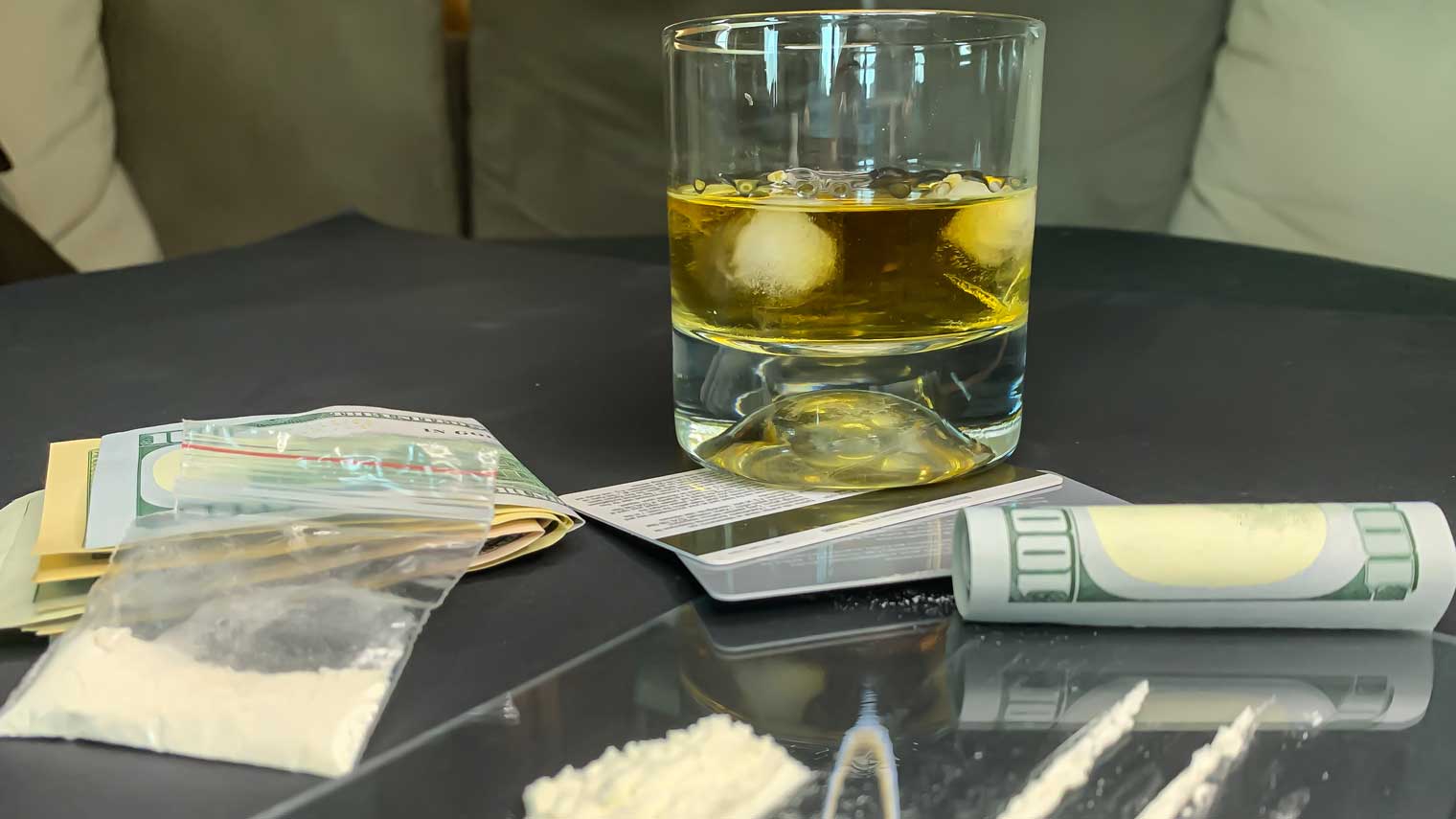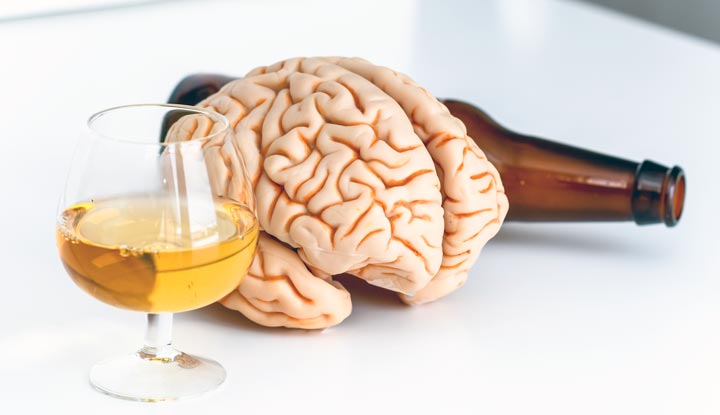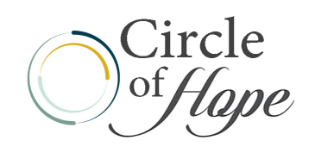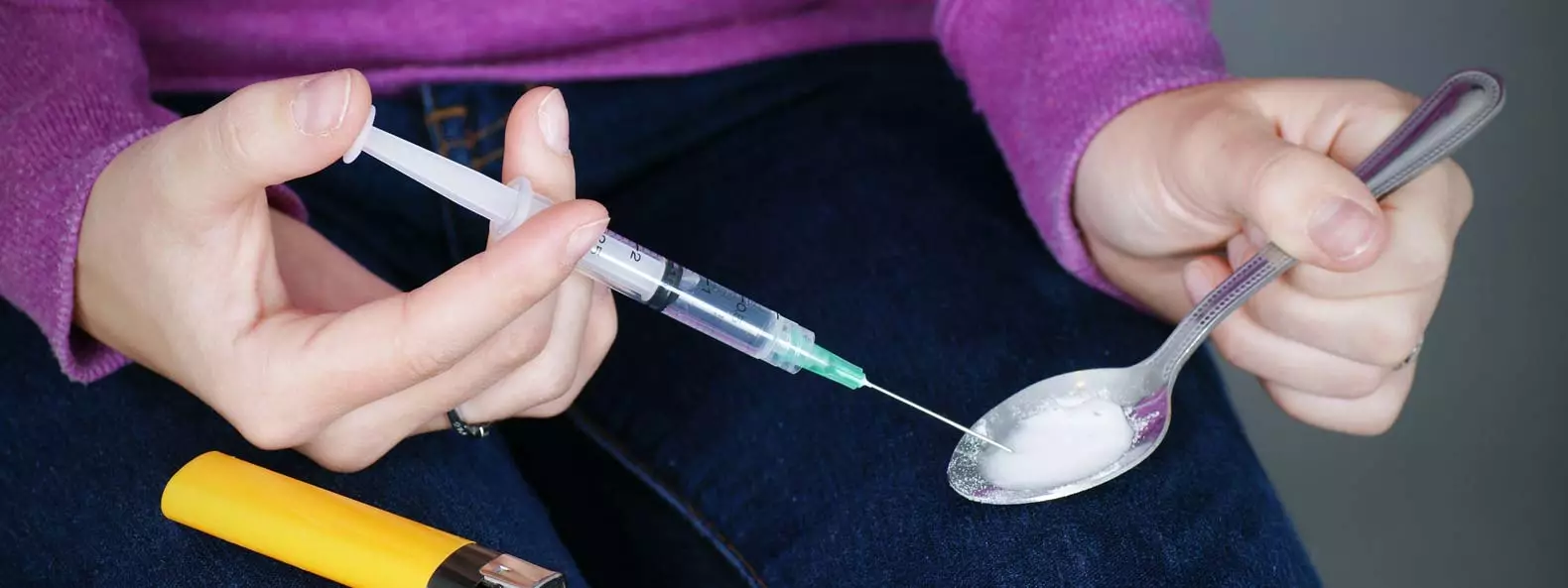It can be harmful to consume either alcohol or methamphetamine. However, some people use both alcohol and meth and they can even become addicted to both. The danger of alcohol and meth when combined is amplified. Alcohol makes it even riskier to use meth and it can make it harder to overcome meth addiction. The consequences can be dangerous and even deadly.
Fortunately, there are ways to get support and overcome both alcoholism and meth abuse. If you or a loved one is using meth and alcohol, this article provides some of the information you need to know. However, it’s important that you reach out to a substance abuse treatment professional for help.
What Is Meth?
Before we get into the specific dangers of combining meth and alcohol, let’s take a look at exactly what meth is. Methamphetamine or meth is a central nervous system stimulant that elicits a powerful high, increases wakefulness, and reduces appetite. The high is short-lived so users often binge or take repeated doses and then crash. Some people take meth continuously for days in what is known as a “run”. During this period, they rarely eat or sleep.
Meth causes the level of dopamine in the brain to spike. Dopamine is a naturally produced chemical that plays an important role in the brain’s reward system. It contributes to motivation and desiring things, including rewards. People who use meth often feel a strong desire to use it time and time again because they want to feel that spike in dopamine again.
What Are the Side Effects of Meth?
People who use meth often display both physical and behavioral signs. You may notice:
- Hyperactive behavior include excessive talking and moving and refusing to eat or sleep
- Extreme excitement
- Increased sex drive
- Mood swings
- Confusion
- Paranoia, delusions, hallucinations, and other symptoms of psychosis
- Frequent scratching (often caused by a hallucination that bugs are crawling on or under the skin)
- Shaking or twitching of the body or face
- Rapid breathing
- Nausea
- Sweating
- Increased body temperature
- High blood pressure, increased heart rate, and irregular heartbeat
- Rapid eye movements
- Enlarged pupils
- Rapid weight loss
- Tooth decay
Knowing the signs of meth use can empower you to help a loved one who is struggling. The sooner you encourage them to seek help, the better the outcome may be. Research shows that long-term meth use affects the parts of the brain linked to memory, learning, coordination, and emotion. The changes can persist long after individuals stop using and in some cases, they are never reversed.
Can You Overdose from Meth?

Any time a person uses meth, there’s a possibility of overdose. That’s because meth is an illegal substance and it can only be purchased on the street. Users can never be certain about the strength, purity, or safety of the drug. Signs of meth overdose include:
- Arrhythmias
- Chest pain
- High or low blood pressure
- Labored breathing
- Agitation
- Seizures
- Hallucinations
- Psychosis
- Fast or slow heartbeat
- Hyperthermia
Most meth overdose deaths are caused by heatstroke leading to multiple-organ failure. However, taking too much meth can also increase blood pressure to the point that it causes a hemorrhage. In addition, liver failure can occur.
Individuals can recover from a meth overdose but a lot depends on how big of a dose they took and how promptly they get treatment. Immediate medical attention is a must and since overdose is an indicator of abuse, substance abuse treatment is also necessary. In the case of addiction to both alcohol and meth, individuals need to access resources for recovery from cross-addiction. Both addictions need to be treated simultaneously.
Does Alcohol Damage the Body?

Alcohol use is so socially accepted that people seem to forget how dangerous it is. However, alcohol can be just as harmful as some illicit substances. Alcohol abuse can result in several negative consequences ranging from hangovers to addiction and death.
While meth stimulates the central nervous system, alcohol depresses it. Therefore, the effects of alcohol on the body are somewhat different from those of meth, although there are some similarities. Alcohol use can lead to:
- Confusion
- Impaired judgment
- Reduced inhibitions
- Slurred speech
- Difficulty with motor coordination
- Slowed reaction time
- Memory loss
- Blurred vision
- Nausea and vomiting
- Sweating
- Dehydration
- Slowed breathing rates
- Lowered blood pressure
- Coma
- Death
Long-term alcohol abuse can damage almost every part of the body. It has been linked to various types of cancer, liver problems, cardiovascular disease, pancreatitis, birth defects, and other issues.
Why Do Some Drinkers Also Use Meth? The Meth and Binge Drinking Connection
Researchers have identified a connection between the likelihood of meth abuse and alcohol use. The connection is especially strong where binge drinking is concerned. Binge drinking refers to the consumption of four or more drinks within two hours by women and five or more drinks in the same period by men.
The relationship between meth and alcohol may develop because some individuals use one substance to help counteract the effects of the other. Since meth is a stimulant, some people drink to decrease the effects and create some sense of balance. Meth may counteract some of the cognitive impairment caused by drinking. Meanwhile, some people may drink large amounts of alcohol to reduce the side effects of meth or hide the fact that they’re abusing meth.
Why Worry About Meth and Alcohol
People who combine meth and alcohol often develop a tolerance to both drugs which means they don’t feel the effects of either in the way they did before. In addition, alcohol may interfere with the metabolism of meth, resulting in a high concentration of meth in the bloodstream. Alcohol may, therefore, enhance the effects of meth on the heart and brain.
Meanwhile, since meth can prevent individuals who drink from feeling intoxicated, they may drink more and develop alcohol toxicity. Ordinarily, people feel drunk after a few drinks and this prompts them to stop drinking. People around them may also urge them not to drink anymore.
However, if meth is masking the effects of the alcohol, individuals often drink past the point where they would typically stop and this increases the likelihood of alcohol poisoning. It also makes it more likely that the person will drive while intoxicated or participate in other dangerous behaviors.
It’s also important to note that meth often increases libido while alcohol lowers inhibitions. Therefore, people who use both meth and alcohol and more likely to engage in risky sexual practices. Given all the potential negative outcomes, people who abuse meth and alcohol need to seek professional treatment so they can begin the recovery process.
Get Long Term Recovery with Addiction Treatment
Abusing even just one substance is dangerous. However, taking more than one addictive substance at the same time amplifies the risks of each substance and could introduce new dangers. If you or someone you love is finding it difficult to stop using alcohol and/or meth, you need to seek help. Every time you drink or use meth, you’re putting yourself in danger.
People who have become dependent on both alcohol and methamphetamine need to undergo detoxification at the start of their recovery journey. This is an important stage before entering rehab but many people worry about what happens during meth and alcohol withdrawal.
Individuals who are dependent on meth and/or alcohol will experience withdrawal symptoms when the drug is no longer in their bodies. These symptoms can be both physical and psychological and they include anxiety, depression, vomiting, dizziness, and uncontrollable drug or alcohol cravings. These symptoms can be highly uncomfortable and even dangerous. Alcohol withdrawal, in particular, can be deadly in the absence of medical supervision.
Therefore, it’s not recommended that individuals attempt to detox alone. Entering a detox facility ensures you have round-the-clock supervision and access to medical care if something goes wrong. After detox is completed, the next step is to undergo rehabilitation. This often involved a combination of therapy and medication. People in rehab usually participate in individual and group counseling, family therapy, drug education classes, and other interventions. These activities are all designed to help individuals understand their addiction and develop the tools they need to achieve and maintain sobriety.
Get Treatment from the Professionals at Circle of Hope
Circle of Hope is a luxury addiction treatment center in Los Angeles. We take a patient-centered, evidence-based approach to treatment and this sets the stage for long-term recovery. We maintain a 3:1 client to counselor ratio to ensure that each person gets the individualized care they need.
If you or someone you love is struggling with meth and alcohol abuse, contact us to learn more about we can help you. We accept most major health insurance plans and we’ll gladly verify your coverage, quickly and without obligation, if you call us with your policy information. Don’t hesitate to get the help you (or a loved one) need, reach out to our Admissions team today!

